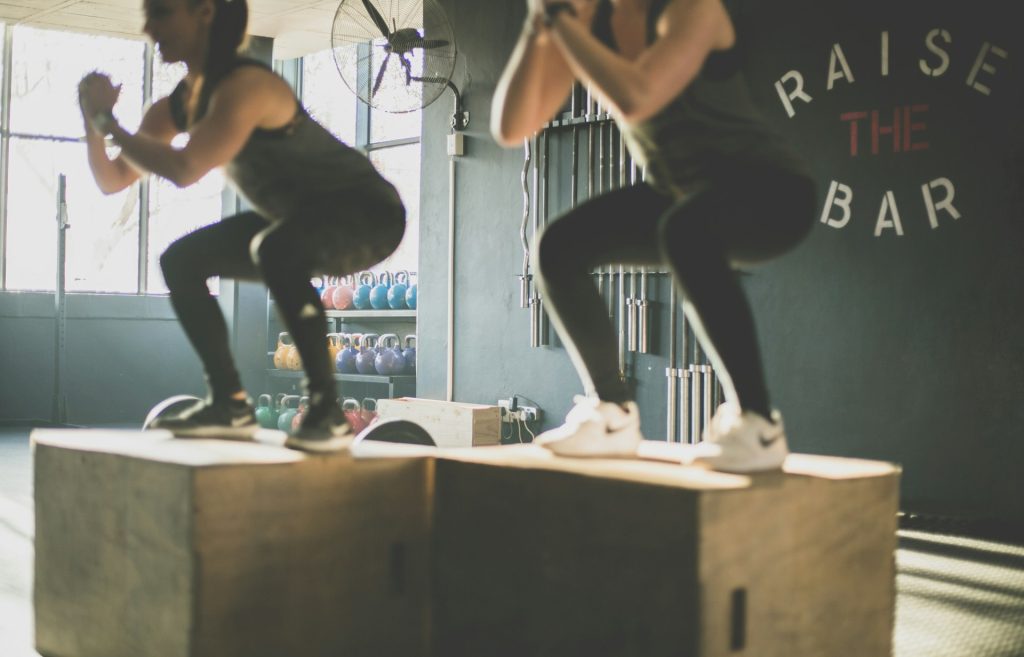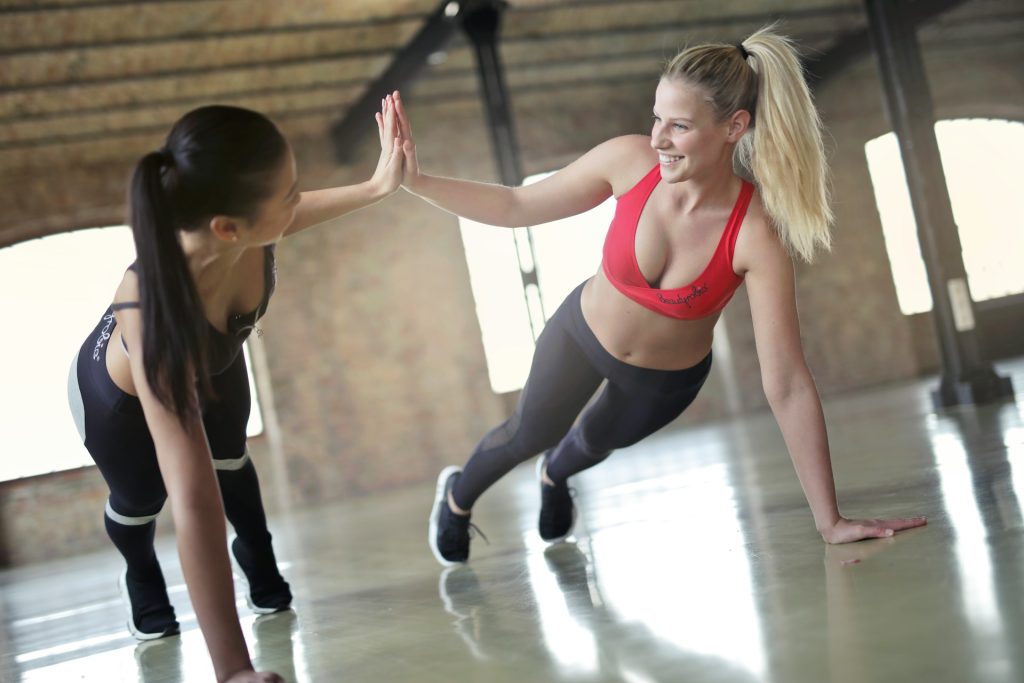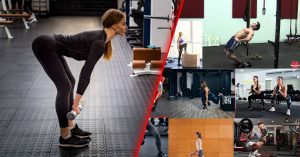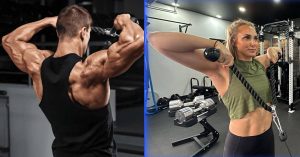In today’s hustle and bustle, finding time for the gym can be a challenge. What if we told you that an effective workout doesn’t require leaving your house or buying expensive equipment? Enter the world of Bodyweight Cardio Exercises, a simple yet powerful way to elevate your heart rate, burn calories, and enhance your aerobic fitness right in the comfort of your living room.
- No Equipment Needed: All you need is your body and some space.
- Save Time: Forget the commute to the gym and start working out at home.
- Flexibility: Workout anytime that fits your schedule.
But, how do these exercises stack up against traditional gym workouts? And what if you’re new to this kind of fitness routine? Read on as we dive into the details.
Table of contents
MORE keyboard_double_arrow_down LESS keyboard_double_arrow_up
Why Do Bodyweight Cardio Exercises Standout?
Bodyweight cardio exercises are not just convenient; they are a cornerstone of fitness, adaptable for anyone, from beginners to seasoned athletes. But what makes these exercises so special, and how can you maximize their benefits at home?
The beauty of bodyweight cardio exercises lies in their simplicity and the minimal space required to perform them. Whether you’re in a tiny apartment or have a spacious living room, these exercises can easily be integrated into your daily routine. This makes them perfect for beginners or those who don’t have access to a gym.
Another advantage is that bodyweight exercises can be tailored to fit any fitness level. Whether you’re just starting out or a seasoned athlete, you can modify the exercises to make them more challenging or easier.
Plus, bodyweight exercises work multiple muscle groups at once, giving you a well-rounded workout. Also, bodyweight cardio provides a full-body workout, engaging multiple muscle groups for a balanced routine.
The benefits are numerous too. Bodyweight cardio can improve your heart health by raising your heart rate. It can also help you build muscle and endurance without needing weights. And lastly, these exercises are a great way to burn calories and manage your weight.
Doing Bodyweight Cardio Workout At Home: All You Need to Know

Embarking on a bodyweight cardio workout journey at home may sound simple, but it’s an art and science that, when done right, can yield impressive results. First, let’s dive into what exactly a cardio workout entails.
It’s any activity that gets your heart pumping faster than its usual pace, which in turn, can significantly boost your cardiovascular health. This includes everything from high knees in your hallway to sprinting on the spot in your living room.
Understanding Cardio Intensity
As mentioned before, cardio workouts are great because you can adjust them to your fitness level. Whether you’re a beginner or a seasoned athlete, you can find a cardio intensity that works for you. But how do you know you’re working hard enough? One way to measure your effort is with your heart rate.
You want to aim for a moderate intensity, which is about 64-76% of your maximum heart rate. To find your max heart rate, you can use a simple formula: 220 minus your age. Wearing a heart rate monitor during your workout is an easy way to track your heart rate and make sure you’re in the right zone to maximize your results.
The Key to a Successful Home Cardio Workout
Starting is as simple as choosing a mix of exercises. But, the secret sauce to keeping it engaging and comprehensive lies in variety. Incorporating a range of movements that challenge your strength, endurance, and agility ensures your entire body benefits from each session. Here’s how to get started:
- Create Your Space: Designate a specific area in your home as your workout zone. It doesn’t need to be large, just enough to move freely.
- Set Your Goals: What do you want to achieve with your workout? Whether it’s weight loss, improved endurance, or better overall fitness, having clear goals can guide your exercise selection.
- Pick Your Exercises: Choose movements that you enjoy and that suit your fitness level. The key is to include a mix that gets your heart rate up and works different muscle groups.
Building Your Workout
Here is how to build your workout:
- Start with a Warm-Up: Begin every session with light movements to get your blood flowing. Think jumping jacks, arm circles, or a quick walk around your home.
- Mix It Up: Combine exercises like high knees, burpees, squat jumps, and mountain climbers. Rotate through different movements to keep your body guessing and your mind engaged.
- Cool Down: End with a cooldown to bring your heart rate back to normal. Stretching can help prevent soreness and improve flexibility.
The Best Bodyweight Cardio Exercises

Transforming your living space into a dynamic workout area is easier than you might think. With no equipment required, you can leverage your body’s weight to create a challenging and effective cardio session.
Let’s delve into the top exercises that can turn any room into your personal fitness studio, promising to elevate your heart rate, enhance your agility, and build your strength.
#1: Jumping Jacks
Jumping Jacks are a timeless classic when it comes to cardio bodyweight exercises. They’re not just a warm-up exercise; they’re a powerful way to boost your cardiovascular health.
How to Execute:
- Stand tall with your arms at your sides, then jump, spreading your legs while simultaneously raising your arms above your head.
- Return to the starting position
- Repeat.
Why it works: This exercise increases your heart rate quickly, enhancing aerobic capacity and improving coordination and agility.
Pro Tip: Keep the intensity high by aiming for rapid, continuous movements. This maximizes calorie burn and cardiovascular benefits.
#2: Phantom Jump Rope
The Phantom Jump Rope takes the essence of jump roping and strips it down to its cardiovascular core by eliminating the need for any equipment.
How to Execute:
- Imagine a string pulling you up from your head. Keep your shoulders back and core engaged for good posture.
- If you have a jump rope, hold a handle in each hand. No rope? No problem! Make fists with your thumbs inside and extend your arms out to your sides like you’re holding handles.
- Keep your elbows tucked in and focus on using your wrists to rotate the rope (real or imaginary) in a smooth circular motion.
- Stay low to the ground and jump off the balls of your feet. Think of gentle hops rather than high leaps. This activates your calves and makes jumping easier.
- Start by jumping slowly and focus on coordinating your wrist rotations with your jumps. Gradually increase your speed as you get comfortable. Don’t worry about jumping super high – focus on going fast for a great workout.
Why it works: This exercise keeps your heart rate elevated, working your calves and improving your aerobic fitness. It’s an excellent workout for stamina and coordination.
Pro Tip: Focus on maintaining a quick pace to keep your heart rate up. Vary your jumping style to include single leg jumps or double unders for added intensity.
#3: Stationary Bounding
Stationary Bounding, or power skipping in place, adds an explosive component to your cardio workout, challenging your muscles and heart alike.
How to Execute:
- Start by skipping in place. As you drive one leg up, swing the opposite arm in a powerful punch towards the ceiling. Imagine you’re trying to touch the sky with your fingertips.
- Bring your knee up high as you skip, but instead of hitting your chin, think about tapping your kneecap to your chest. This keeps your core engaged and helps with explosiveness.
- Push off the balls of your feet with all your might to propel yourself as high as you can with each skip.
- As one foot touches down, use that momentum to swing the opposite arm with a powerful punch, propelling the other leg up towards your chest. It should feel smooth and continuous, like a blur of powerful movements.
- Think about maximizing the range of motion in your arms and legs. Swing your arms high, reach for the sky with those punches, and bring your knees close to your chest. The bigger the movements, the more power you’ll generate for those explosive jumps.
Why it works: This exercise targets your leg muscles, core, and arms, providing a full-body workout that significantly increases your heart rate and builds explosive strength.
Pro Tip: Focus on height and power with each bound. The more effort you put into the leap, the more you’ll challenge your cardiovascular system and muscle strength.
#4: Lateral Jumps
Lateral Jumps are not just about moving from side to side; they’re about pushing your agility to its limits and testing your speed in a fun, dynamic way.
How to Execute:
- Stand with your feet together.
- Jump to the side as far as you can, landing softly and immediately jumping back to the other side.
Why it works: This exercise is a fantastic way to improve your balance and coordination while engaging the core and leg muscles. It tests your agility and speed, making you more nimble and quick on your feet.
Pro Tip: To increase the challenge, try to minimize the time your feet are in contact with the ground. The faster you jump from side to side, the more you’ll challenge your cardiovascular system and improve your reaction times.
#5: Jump Squats
Jump Squats add an explosive element to the traditional squat, challenging your legs and cardiovascular system in a way that regular squats cannot.
How to Execute:
- Start in a squat position with your feet shoulder-width apart.
- Explode upwards into a jump, reaching as high as you can, then land softly and sink back into a squat. This movement should be fluid and continuous.
Why it works: Integrating the jump into a squat not only works your lower body muscles more intensely but also spikes your heart rate, offering a significant cardio benefit. It’s a compound movement that engages multiple muscle groups simultaneously.
Pro Tip: Focus on form and landing softly to protect your joints. To add intensity, reduce the pause between jumps or increase the number of repetitions.
#6: Burpees
Burpees are the quintessential full-body workout, combining a squat, push-up, and jump into one fluid movement. It’s a challenging exercise that promises comprehensive benefits.
How to Execute:
- Start nice and low in a full squat, like you’re about to sit in an invisible chair.
- Push your hands down in front of you, shoulder-width apart. In one smooth motion, jump your legs back into a high plank position, just like a push-up.
- Do a full push-up, feeling the strength in your chest and arms.
- Explode back up! Jump your feet back towards your hands, tucking your knees slightly for a powerful jump. Reach for the ceiling.
- Land softly with knees bent to absorb the impact. Immediately squat back down, ready to repeat the whole sequence for a total body burn.
Why it works: Burpees challenge every major muscle group in your body, from your legs to your arms to your core, making it an incredibly efficient exercise for improving cardiovascular fitness and muscle tone.
Pro Tip: To keep the intensity high, aim for quick, seamless transitions between each part of the movement. For an added challenge, increase the speed or number of repetitions.
#7: Tuck Jumps
Tuck Jumps are a dynamic, high-energy exercise that can transform your fitness routine by adding an explosive element to your cardio workout.
- How to Execute: Start in a standing position. Explosively jump up, bringing your knees towards your chest as much as possible while wrapping your arms around your legs at the highest point. Land softly and immediately prepare for the next jump.
- Why It Works: This exercise is a powerhouse for increasing your heart rate rapidly while simultaneously strengthening your lower body and core muscles. The explosive nature of the jump maximizes calorie burn and enhances muscular power.
- Pro Tip: Focus on the quality of each jump, ensuring maximum knee lift every time. To increase the intensity, minimize the rest between jumps or aim for more repetitions.
#8: Mountain Climbers
Mountain Climbers offer a unique blend of cardiovascular endurance and strength training, simulating the intense activity of climbing a steep incline—all from the comfort of your living room floor.
How to Execute:
- Begin in a high plank position, hands planted firmly on the ground, shoulder-width apart.
- Quickly alternate driving your knees towards your chest, maintaining a strong, stable core throughout.
- The movement should be fast-paced, mimicking a running motion.
Why It Works: This exercise engages multiple muscle groups simultaneously, with a particular focus on the core, while the rapid leg movements provide a substantial cardio workout. It’s an excellent way to improve cardiovascular health, endurance, and core strength.
Pro Tip: Keep your back flat and hips down to maximize core engagement. To add variety, incorporate cross-body mountain climbers, bringing your knee towards the opposite elbow with each rep.
Tips and Advice To Keep In Mind When Doing Bodyweight Cardio Exercises

The key to reaping the benefits of bodyweight cardio exercises lies in their consistent incorporation into your daily routine. Here’s how you can make these exercises work for you:
- Set a Goal: Aim for at least 150 minutes of moderate-intensity aerobic activity each week, as recommended by health organizations.
- Create Variety: Mix and match different exercises to keep your routine fresh, engaging, and challenging. This approach helps prevent workout boredom and plateaus in progress.
- Stay Consistent: Regularity is more important than intensity or duration. Consistent, daily efforts yield better long-term results than sporadic, intense workouts.
Final Thoughts
Bodyweight cardio exercises stand out as a versatile and effective method for maintaining fitness on your terms. They are proof that achieving great fitness does not require complex equipment or expensive gym memberships but rather the willingness to use your body as the ultimate fitness tool.
Whether you have a busy schedule or limited space, these exercises can be tailored to fit your life. Combining strength, endurance, and agility, bodyweight exercises offer a balanced workout that can be adjusted to any fitness level.
Everything you need to begin is already within you. Your commitment and your body are the only prerequisites for embarking on this fitness journey.
Are you prepared to embrace the challenge and transform your approach to fitness? With the exercises outlined in this guide, you possess the foundation for a healthier, more active lifestyle.
Dive in, experiment, and discover the joy of moving towards your fitness goals with confidence and determination. Let’s begin this journey together, one step, jump, and climb at a time.
Key Points
- Bodyweight cardio exercises are an effective way to enhance cardiovascular health and increase lung capacity without the need for equipment.
- Incorporating a variety of bodyweight exercises into a routine can improve heart and lung function by engaging multiple muscle groups simultaneously.
- Cardio workouts can be performed effectively without weights, focusing on improving cardiovascular endurance and maintaining muscle tone.
- A mix of cardio bodyweight exercises, including jumping jacks, burpees, and high-intensity interval training (HIIT), can tone the body and improve overall fitness.
- Consistency in performing bodyweight cardio exercises, aiming for at least 150 minutes of moderate-intensity activity per week, is key to achieving fitness goals.
- Effective cardio workouts are accessible to everyone, regardless of space or equipment availability, debunking the myth that you need a gym or equipment for a good workout.
- Bodyweight cardio exercises provide a flexible and effective way to stay fit, offering the convenience of working out on your own terms and schedule.
FAQs
Can You Do Bodyweight Exercises for Cardio?
Absolutely! Bodyweight cardio exercises are an excellent way to get your heart pumping and increase your lung capacity. By engaging multiple muscle groups simultaneously, these exercises demand more energy, which in turn makes your heart and lungs work harder. Examples include jumping jacks, burpees, and mountain climbers, all of which use no equipment but are highly effective at boosting cardiovascular fitness.
Is It OK to Do Cardio Without Weights?
Yes, it’s perfectly fine to do cardio without weights. While incorporating weight training into your routine can enhance muscle strength and tone, cardio exercises alone can also provide significant health benefits, including improved heart health and endurance. However, for comprehensive fitness, a combination of cardio and strength training is recommended to ensure you’re not only improving cardiovascular endurance but also building and maintaining muscle strength.
What Is the Best Cardio to Tone Body?
The best cardio exercises for toning your body often include movements that engage multiple muscle groups at once. Here are some top home cardio exercises for toning:
- Jump Rope: An effective form of cardio that also helps with coordination.
- Jumping Jacks: Works the heart, lungs, and muscles simultaneously.
- Burpees: A full-body workout that improves muscle tone and endurance.
- Running in Place: Convenient and straightforward, it’s great for cardiovascular health.
- Squat Jumps: Strengthens and tones the lower body while providing a cardio workout.
- High-Intensity Interval Training (HIIT): Combines short bursts of intense exercise with periods of rest or low-intensity activity, excellent for toning and endurance.
What Is the Hardest Cardio Exercise?
High-Intensity Interval Training (HIIT) is often considered one of the most challenging cardio workouts. HIIT involves alternating periods of intense activity with periods of rest or low-intensity activity. The reason HIIT is so demanding is that it pushes your body to its limits, requiring you to give maximum effort during the high-intensity intervals, which significantly challenges your cardiovascular system and muscles.

ABOUT THE AUTHOR
Follow Valen Steven for a dose of fitness enthusiasm, evidence-based advice, and a roadmap to achieving your health and wellness goals.
Subscribe to our Newsletter
Dive into a world of fitness and wellness with our exclusive newsletter! Sign up now and receive weekly power-packs of fitness wisdom




